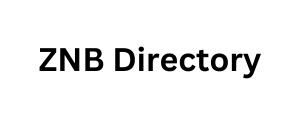- Centralized Management: Enables administrators to oversee user access across different platforms.
- Security Enhancement: Identifies redundant or outdated systems that could pose security risks.
- Compliance: Ensures adherence to data protection regulations by controlling who can access sensitive information.
- Operational Efficiency: Simplifies onboarding and offboarding procedures by knowing exactly which systems are in use.
Common Types of Systems in Organizations
Organizations typically operate multiple sms gateway norway systems, each serving specific functions. Below are some of the most common systems that should be listed and managed:
1. Enterprise Resource Planning (ERP) Systems
ERP systems integrate core business processes like finance, supply chain, and human resources. Examples include SAP, Oracle ERP Cloud, and Microsoft Dynamics. Proper access control ensures that employees only access relevant modules.
2. Customer Relationship Management (CRM) Systems
CRM platforms like Salesforce, HubSpot, and Zoho CRM help manage customer interactions and sales pipelines. Limiting access based on roles prevents what is mail gateway (secure email gateway)? data breaches and maintains customer confidentiality.
3. Email and Communication Platforms
Email servers, Microsoft Exchange, Slack, and Microsoft Teams facilitate communication within organizations. Access profiles determine who can send, receive, or manage communication channels.
4. File Sharing and Collaboration Tools
Platforms like Google Drive, Dropbox, and SharePoint enable document sharing and collaboration. Proper permissions prevent unauthorized editing or sharing of sensitive documents.
5. Financial and Accounting Systems
Systems such as QuickBooks, Xero, or Oracle Financials handle sensitive financial data. Strict access controls are critical for compliance and fraud prevention.
6. HR and Payroll Systems
HR platforms like Workday, BambooHR, afghanistan business directory and ADP manage employee data, payroll, and benefits. Limiting access ensures data privacy and regulatory compliance.
7. Specialized Industry Systems
Depending on the sector, organizations may have additional systems like manufacturing control, healthcare management, or legal case management platforms.
Defining Access Profiles: Best Practices
Once all systems are listed, the next step is to define access profiles tailored to user roles and responsibilities. Properly structured access profiles enhance security and operational efficiency.
1. Role-Based Access Control (RBAC)
RBAC assigns permissions based on user roles such as administrator, manager, employee, or contractor. For example:
- Administrators: Full access to all systems and settings.
- Managers: Access to relevant modules like reports and team data.
- Employees: Limited access to their own data and relevant tools.
- Contractors: Restricted access to specific systems necessary for their tasks.
2. Principle of Least Privilege
Users should only have the permissions necessary to perform their duties. This minimizes the risk of accidental data leaks or malicious activities.
3. Segregation of Duties
Critical functions, such as approving transactions or modifying sensitive data, should be divided among different roles to prevent fraud or errors.
4. Regular Review and Auditing
Access profiles should be periodically reviewed and updated. Auditing logs help in detecting unauthorized access or suspicious activities.
Implementing and Managing Access Profiles
- Use centralized identity management systems like Active Directory or LDAP for easier management.
- Automate onboarding and offboarding to ensure timely permission updates.
- Train staff on security best practices and the importance of access controls.
- Employ multi-factor authentication (MFA) for added security, especially for critical systems.
